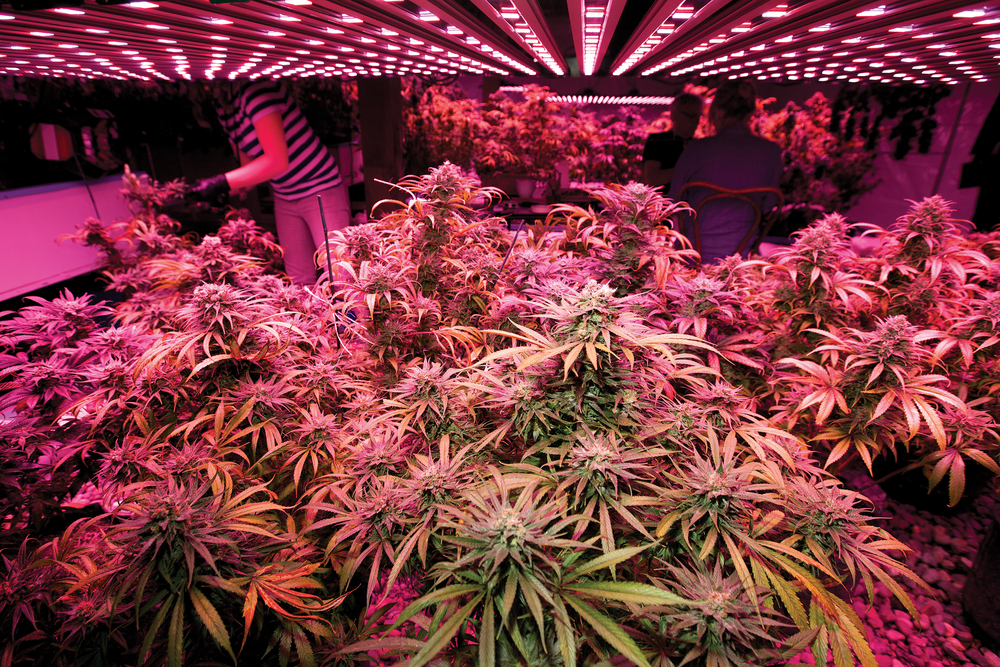- Now that the autumn chills are upon us, you might be considering re-engaging in indoor growing.
- Before getting down to work, though, you’ll have to clean the grow space thoroughly and check all your electrical and mechanical devices are working properly.
- This will ensure optimal growing conditions for your plants and will save you from nasty surprises that could make you lose not only time and money, but also your entire crop.

Spring cleaning in autumn
Cleaning of the tools and equipment
The first thing to consider when setting up your grow room is thorough cleaning. For a perfect result, unplug the electrical appliances, take them apart, wipe them carefully with a clean, dry cloth - you can use a brush for difficult to access areas - and re-wipe with a cloth damped with diluted cleaner. This disinfection method will allow you to keep your equipment free from bacteria and other microorganisms including fungal spores.
Moving on to the cleaning of tools like scissors and knives, 70 per cent alcohol is what works best. This will ensure your tools are free from bacteria, which could otherwise infect your plants. Next, clean the growing tables, pots, mini greenhouses and the like with soapy water or a cleaner capable of eliminating accumulated waste and mineral salts.
Cleaning of the grow room
For a really thorough cleaning, we recommend that you clear out the room and take all the stuff somewhere else until the job is done. Whether you're growing in a tent or in a room, the goal remains the same: thoroughly disinfecting the grow space so that your plants grow in a healthy environment. For an efficient cleaning job, you will have to take care of the floor and ceiling too, for which you can use a disinfectant capable of removing all types of toxic substances. Also, bear in mind that using a grow tent won't save you the effort of cleaning the rest of the room.
And just remember, a full clean-up of the grow space provides the basis for a successful crop where glitches and diseases are not a problem.
Maintenance of the growing equipment to hit the ground running
Make sure you check all the necessary equipment before you start:
Grow tent: Choose a high-quality model consisting of a stable frame, a sturdy canvas and resistant zips which is easy to mount and unmount. Generally, high-quality grow tents have a useful life of 10 years.
Lighting: While the reflector and the ballast should last for years, lamps need to be replaced every 4-5 grows. Currently, HPS lamps are the most popular with cannabis growers. Alternatively, you can use LED lamps, which you won't have to replace in years; energy-saving CFL lamps, which are safe to use and last a minimum of 5 years, and MH and CMH lamps, which, while long-lasting, need to be replaced every 6-7 grows. Even if every lighting system has a specific useful life, we recommend that you replace the whole system every 8 years, when their performance starts to decline.

Light hanger: Regardless of the system -Easy Rolls type adjustable pulleys or adjustable straps with safety clip - light hangers need to be replaced every 5 years at most.
Exhaust/intake fan (ventilation): Air intake/exhaust systems tend to be safe and long-lasting, still you'll have to replace them every 6-8 years, when they become less efficient.
Active carbon filters (ventilation): Carbon filters need to be refilled on an annual basis. Equally important is to replace the fabric covering the cylinder.
Fans (ventilation): The useful life of the wide range of commercially available fans varies greatly from model to model. While mid-range models can last from 3 to 4 years, more sophisticated fans won't need to be replaced in 6-7 years. Ultimately, it all comes down to choosing the option that best fits your needs and budget.
Air conditioner (ventilation): Periodically checking things like the cleanliness of the filters and the coolant level is enough to ensure your air conditioner works seamlessly for 8-10 years.
Humidifier (ventilation): The useful life and features of humidifiers vary greatly from model to model, but to give you a rough idea, a mid-range, heavily used humidifier should last 3-4 years.
Dehumidifier (ventilation): Contrary to humidifiers, dehumidifiers are more uniform in quality, functioning well for 5-7 years.
Digital timer: As a rule, digital timers need to be replaced every 3-4 years. Due to their poor reliability and rapid wear, mechanical timers are not recommended.
Extension cords: While most extension cords can easily last 3-4 years, it is best to replace them according to the charge transferred. If your cords hold high amounts of charge, you will probably have to replace them after 2 years, while you can expect your less intensely used cords to last about 8 years.
Plastic/fabric pots: Most pots endure heavy use for about 4-5 years, when the material may start to deteriorate - depending on the quality of the model, you may need to replace your pots after just 3 years. If you're at a loss about what brand to choose, you can try Smartpot, a leading brand in the gardening industry.
Mini greenhouse: As most models are made of plastic, a material that doesn't age particularly well, you'll have to replace your mini greenhouse after 3-5 years, when it becomes less airtight and the cover starts to lose transparency, interfering with the passage of light.
As a rule, you should check the proper functioning of all your electrical and mechanical devices, including the cables and the sockets. As for substrates and fertilizers, buy only the amount necessary for one grow, as it is best not to store this type of product for long periods of time. Hence the importance of using fresh soil and nutrients every time. Lastly, remember to closely monitor your plants to timely detect any unforeseen complications that may compromise the success of your crop.
Happy harvesting!



Comments from our readers
There are no comments yet. Would you like to be the first?
Leave a comment!Did you like this post?
Your opinion about our seeds is very important to us and can help other users a lot (your email address won't be made public).